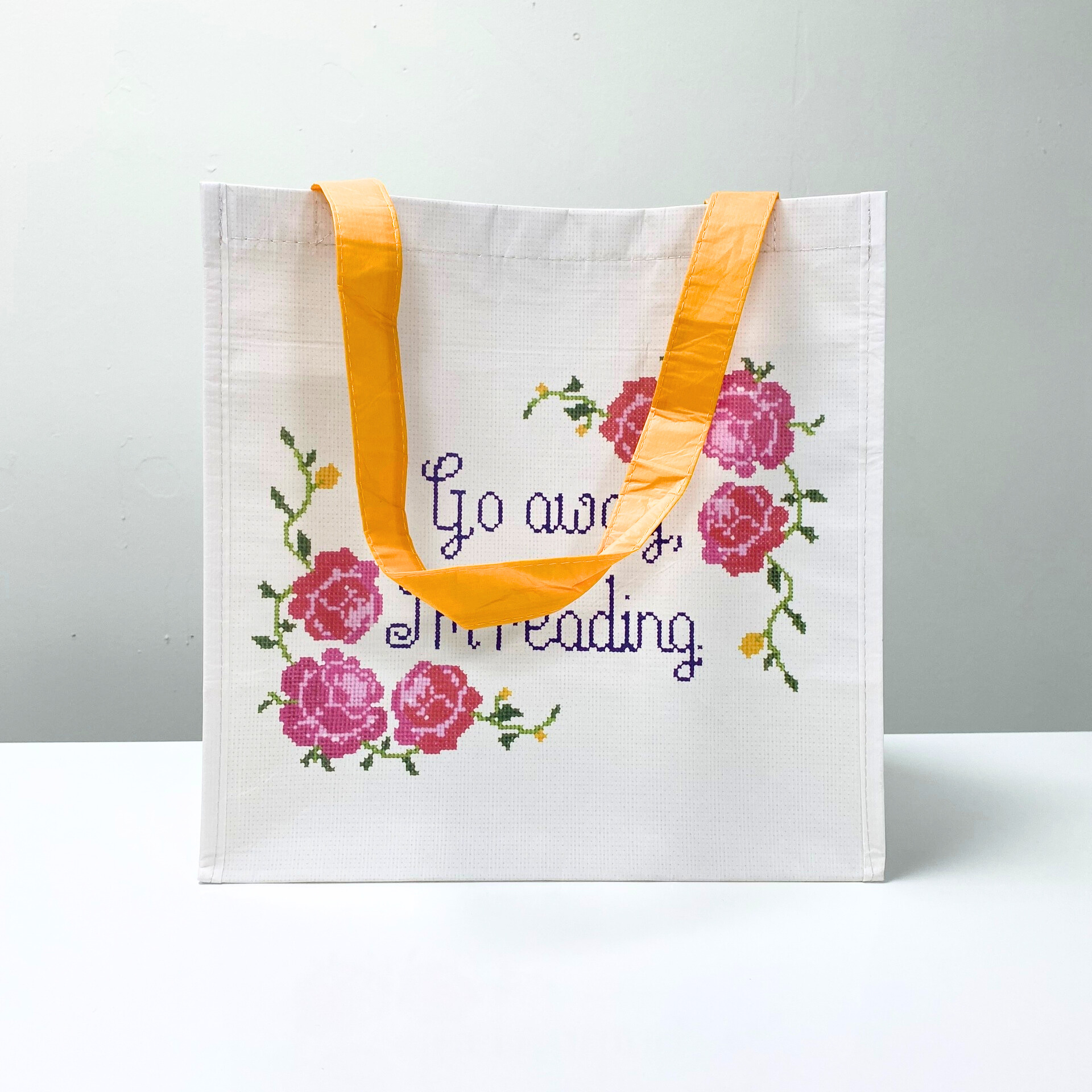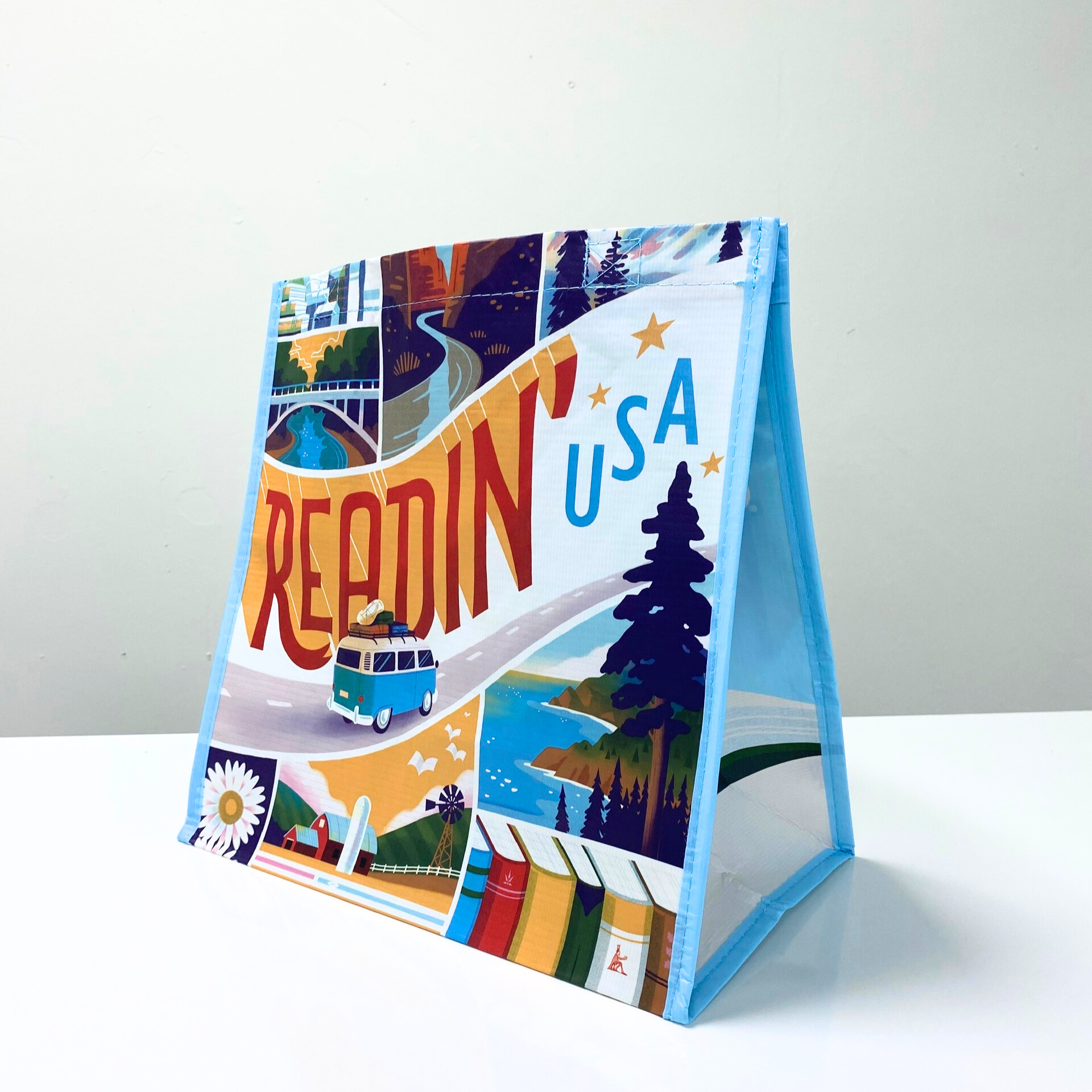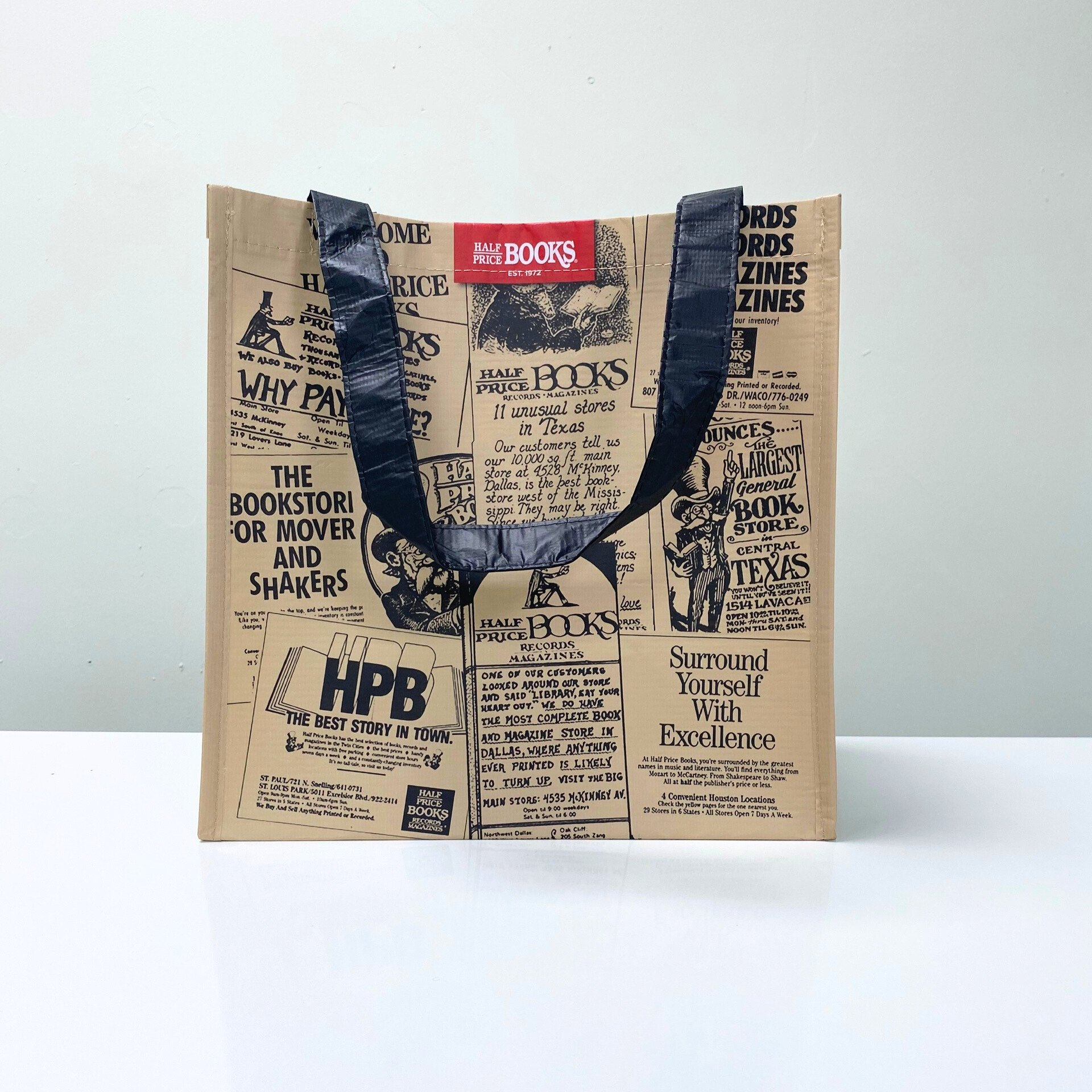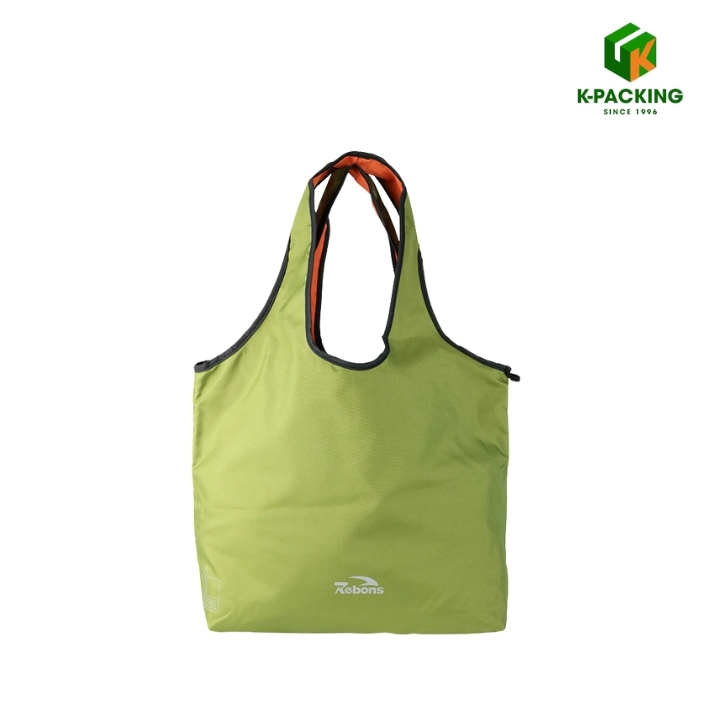K-packing
Thành viên
- Tham gia
- 17/10/2025
- Bài viết
- 6
RPET (Recycled Polyethylene Terephthalate) bags are proving to be one of the most effective tools for sustainable branding. According to Grand View Research (2024), the global RPET market was valued at USD 10.8 billion in 2023 and is projected to reach USD 18.7 billion by 2030, growing at a 7.9% CAGR, driven by corporate ESG goals and consumer demand for recycled materials.
Consumer insights reinforce this shift. Studies show that 74% of consumers are willing to pay more for sustainable packaging, and over 60% of European shoppers now prioritize brands with visible environmental commitments. Brands like Coca-Cola, H&M, and Gorman have already leveraged RPET packaging to improve customer loyalty and brand perception with Gorman reporting USD 200,000 in annual savings by switching from free to paid RPET bags.
Beyond the marketing value, RPET production cuts CO₂ emissions by up to 75% and uses 50% less energy than virgin polyester, making it both an eco-efficient and cost-efficient choice. For modern brands, RPET represents more than material innovation – it’s a measurable way to align business growth with environmental responsibility. The following sections explore how leading industries are applying RPET bags to strengthen brand awareness, customer loyalty, and sustainable impact.
Retail brands today are under pressure to reduce single-use plastics and show a genuine commitment to sustainability. RPET bags offer a practical way to do both – while serving as mobile billboards that continuously promote a brand long after a purchase.
Global retailers like Whole Foods and Trader Joe’s have turned their reusable bags into cultural icons. Whole Foods replaced all plastic bags with RPET versions made from post-consumer bottles, while Trader Joe’s used eco-tote designs to express its “neighborhood market” personality. Meanwhile, Uniqlo rolled out its “My Recycled Bag” initiative across Asia, inviting customers to reuse and return old totes for recycling – a move that strengthened both loyalty and awareness.
By integrating RPET bags into the customer experience, retail brands create visibility that paid ads can’t match. Every time a shopper carries the bag, they amplify the brand’s presence in streets, offices, and communities. Over time, this turns customers into brand ambassadors who naturally showcase their values.
To maximize impact, retailers can offer RPET bags as part of loyalty programs, use them as limited-edition collectibles, or embed QR codes that link to sustainability pages or exclusive promotions. The key is consistency when the message on the bag aligns with the brand’s ESG story, it turns a simple shopping accessory into a long-term branding asset.
 Customers carrying branded RPET shopping bags in a modern retail store, symbolizing everyday visibility and sustainable brand recognition.
Customers carrying branded RPET shopping bags in a modern retail store, symbolizing everyday visibility and sustainable brand recognition.
Luxury chains such as Marriott International and Hilton Hotels have already integrated sustainable materials into their guest experiences. Marriott’s “Serve 360” initiative emphasizes responsible sourcing, and several of its properties now use RPET laundry and tote bags as part of their in-room amenities. Similarly, InterContinental Hotels Group (IHG) provides reusable RPET totes for guests at eco-certified resorts, aligning with their “Journey to Tomorrow” sustainability goals. These small but visible gestures reinforce each brand’s long-term commitment to ESG values.
RPET bags in hospitality do more than replace plastic packaging – they create an emotional connection. A well-designed welcome tote or beach bag, branded with the hotel’s logo, turns into a keepsake that guests carry home. Each reuse becomes a subtle form of word-of-mouth marketing, spreading brand recognition to new audiences across cities and countries.
For hotels and travel operators, RPET bags also serve as storytelling tools. Tags or prints can highlight how many plastic bottles were recycled to make the bag, linking the guest’s experience to a tangible act of sustainability. Resorts can use them for poolside service, gift shops, or as part of corporate event kits, adding both function and brand value.
In an era where eco-friendly travel choices are becoming a key booking factor, adopting RPET bags helps hospitality brands move from intention to action – transforming sustainability from a slogan into a visible, memorable part of the guest journey.
 Elegant RPET tote placed on a hotel bed as part of a welcome gift, reflecting eco-friendly hospitality and premium guest experience.
Elegant RPET tote placed on a hotel bed as part of a welcome gift, reflecting eco-friendly hospitality and premium guest experience.
Global leaders like Coca-Cola and PepsiCo have pioneered the use of RPET bottles and carry bags to close the plastic loop in their supply chains. Starbucks took a similar step by introducing reusable and recycled-material merchandise, from coffee totes to cold drink sleeves, encouraging customers to reuse and return. In Asia, Nestlé Japan and Danone have shifted to 100% RPET for promotional and takeaway packaging, aligning with their carbon-neutral goals by 2030.
Beyond compliance, RPET bags serve as a tactile expression of brand integrity. A transparent RPET takeaway bag or cooler not only protects food safely but also lets customers see the product, turning visibility into trust. The sleek, modern look of RPET enhances the perception of freshness, hygiene, and premium quality, all key drivers in consumer choice for F&B brands.
Smart restaurants and beverage chains are using RPET bags as storytelling tools. Tags or printed graphics show how many bottles were recycled or how much CO₂ was saved, giving customers a sense of shared impact. This approach transforms packaging from a disposable necessity into a conversation starter about the brand’s values.
Whether for takeaway, catering, or retail product lines, RPET bags elevate how food brands connect with their audiences, showing that sustainability can be both functional and desirable. In an industry driven by emotion and experience, that combination builds loyalty no traditional ad could buy.
 Stylish RPET cooler and takeaway bags used in a café or restaurant setting, showcasing freshness, hygiene, and sustainable packaging design.
Stylish RPET cooler and takeaway bags used in a café or restaurant setting, showcasing freshness, hygiene, and sustainable packaging design.
Tech giants such as Google, Dell, and Microsoft have incorporated recycled materials into their merchandise and event kits as part of their ESG initiatives. Dell’s “Legacy of Good” program, for instance, integrates RPET and ocean-bound plastics into packaging and promotional products. Google Cloud provides recycled-fabric tote bags at major conferences like Cloud Next, showcasing innovation and sustainability side by side. In the Asia-Pacific region, Samsung and Huawei use RPET laptop sleeves and gift sets for employee onboarding, reflecting their focus on green manufacturing and brand ethics.
For corporate environments, RPET bags combine utility with symbolism. A tech organizer or laptop bag made from recycled bottles signals both modernity and environmental care. They are ideal for welcome kits, trade shows, and B2B gifts, offering everyday usability while carrying the company’s identity wherever they go.
Beyond branding, these eco-conscious materials strengthen a company’s ESG reporting. Each RPET bag represents measurable environmental savings, from reduced CO₂ emissions to lower energy consumption. By communicating these metrics through printed messages or digital QR tags, brands make sustainability tangible and verifiable.
In a sector defined by innovation, adopting RPET bags shows that progress and responsibility can coexist. It transforms corporate gifts and promotional materials into lasting reminders of a company’s commitment to building a smarter, greener future.
 Modern RPET laptop and tech organizer bags featured in a corporate workspace, representing innovation, professionalism, and environmental responsibility.
Modern RPET laptop and tech organizer bags featured in a corporate workspace, representing innovation, professionalism, and environmental responsibility.
Global leaders such as Nike, Adidas, and Puma have each embraced RPET and other recycled fabrics in their collections. Nike’s “Move to Zero” initiative uses RPET in gym duffels and training accessories, while Adidas has incorporated recycled polyester across its sportswear and bag lines. Decathlon, one of the world’s largest sports retailers, uses RPET for its “EcoDesign” backpacks and yoga bags, promoting accessible sustainability for every customer segment.
For fitness brands, RPET bags are not just about materials – they enhance the brand’s lifestyle image. A lightweight duffel or gym bag made from recycled bottles reflects durability, practicality, and social awareness. When consumers carry these products to the gym or the field, they become walking advocates for responsible consumption.
RPET also performs well under demanding conditions. It is water-resistant, easy to clean, and strong enough to handle heavy gear, making it ideal for gym, travel, and outdoor use. Brands can use these features as storytelling touchpoints: every function supports both athlete performance and environmental preservation.
In an industry that celebrates health and motivation, RPET bags embody a new kind of fitness – one that includes caring for the planet. By aligning sustainability with performance, sports brands can inspire communities to train harder, live better, and consume more responsibly, all while carrying a brand that shares their values.
 Durable RPET gym and duffel bags in an active fitness environment, highlighting performance, endurance, and commitment to a sustainable lifestyle.
Durable RPET gym and duffel bags in an active fitness environment, highlighting performance, endurance, and commitment to a sustainable lifestyle.
To maximize value, brands should ensure consistency between their eco messaging and business practices. A premium RPET tote means little if the customer experience feels rushed or impersonal. On the other hand, when the product, packaging, and service all reflect the same responsible mindset, every touchpoint reinforces trust.
Leading brands such as IKEA and Starbucks demonstrate this alignment. Their RPET merchandise is backed by transparent communication, strong product quality, and visible actions within their supply chains. This coherence turns sustainability from a marketing claim into a lived experience for customers.
In essence, RPET bags perform best when they are part of a holistic brand strategy one that links design, communication, and operations under the same purpose-driven vision.
Conclusion
RPET bags are no longer a niche sustainability experiment, they are a proven branding tool that combines environmental impact with measurable business value. Across retail, hospitality, food and beverage, corporate, and sports industries, leading brands are turning recycled materials into opportunities for engagement, loyalty, and visibility.
What makes RPET powerful is not only its recycled origin but its ability to embody a brand’s purpose. When supported by strong products, genuine service, and transparent communication, RPET becomes part of a larger story, one that connects profit with responsibility.
Consumer insights reinforce this shift. Studies show that 74% of consumers are willing to pay more for sustainable packaging, and over 60% of European shoppers now prioritize brands with visible environmental commitments. Brands like Coca-Cola, H&M, and Gorman have already leveraged RPET packaging to improve customer loyalty and brand perception with Gorman reporting USD 200,000 in annual savings by switching from free to paid RPET bags.
Beyond the marketing value, RPET production cuts CO₂ emissions by up to 75% and uses 50% less energy than virgin polyester, making it both an eco-efficient and cost-efficient choice. For modern brands, RPET represents more than material innovation – it’s a measurable way to align business growth with environmental responsibility. The following sections explore how leading industries are applying RPET bags to strengthen brand awareness, customer loyalty, and sustainable impact.
Retail brands today are under pressure to reduce single-use plastics and show a genuine commitment to sustainability. RPET bags offer a practical way to do both – while serving as mobile billboards that continuously promote a brand long after a purchase.
Global retailers like Whole Foods and Trader Joe’s have turned their reusable bags into cultural icons. Whole Foods replaced all plastic bags with RPET versions made from post-consumer bottles, while Trader Joe’s used eco-tote designs to express its “neighborhood market” personality. Meanwhile, Uniqlo rolled out its “My Recycled Bag” initiative across Asia, inviting customers to reuse and return old totes for recycling – a move that strengthened both loyalty and awareness.
By integrating RPET bags into the customer experience, retail brands create visibility that paid ads can’t match. Every time a shopper carries the bag, they amplify the brand’s presence in streets, offices, and communities. Over time, this turns customers into brand ambassadors who naturally showcase their values.
To maximize impact, retailers can offer RPET bags as part of loyalty programs, use them as limited-edition collectibles, or embed QR codes that link to sustainability pages or exclusive promotions. The key is consistency when the message on the bag aligns with the brand’s ESG story, it turns a simple shopping accessory into a long-term branding asset.

Sustainability has become a defining factor in modern hospitality. Travelers today expect hotels and resorts not only to offer comfort but also to demonstrate environmental responsibility. RPET bags fit naturally into this expectation – offering a blend of practicality, elegance, and eco-conscious branding that extends far beyond the hotel stay.Luxury chains such as Marriott International and Hilton Hotels have already integrated sustainable materials into their guest experiences. Marriott’s “Serve 360” initiative emphasizes responsible sourcing, and several of its properties now use RPET laundry and tote bags as part of their in-room amenities. Similarly, InterContinental Hotels Group (IHG) provides reusable RPET totes for guests at eco-certified resorts, aligning with their “Journey to Tomorrow” sustainability goals. These small but visible gestures reinforce each brand’s long-term commitment to ESG values.
RPET bags in hospitality do more than replace plastic packaging – they create an emotional connection. A well-designed welcome tote or beach bag, branded with the hotel’s logo, turns into a keepsake that guests carry home. Each reuse becomes a subtle form of word-of-mouth marketing, spreading brand recognition to new audiences across cities and countries.
For hotels and travel operators, RPET bags also serve as storytelling tools. Tags or prints can highlight how many plastic bottles were recycled to make the bag, linking the guest’s experience to a tangible act of sustainability. Resorts can use them for poolside service, gift shops, or as part of corporate event kits, adding both function and brand value.
In an era where eco-friendly travel choices are becoming a key booking factor, adopting RPET bags helps hospitality brands move from intention to action – transforming sustainability from a slogan into a visible, memorable part of the guest journey.

The food and beverage industry faces one of the toughest sustainability challenges, balancing convenience with responsibility. As consumers become more aware of packaging waste and carbon footprints, brands that adopt RPET packaging signal transparency, safety, and care for the planet.Global leaders like Coca-Cola and PepsiCo have pioneered the use of RPET bottles and carry bags to close the plastic loop in their supply chains. Starbucks took a similar step by introducing reusable and recycled-material merchandise, from coffee totes to cold drink sleeves, encouraging customers to reuse and return. In Asia, Nestlé Japan and Danone have shifted to 100% RPET for promotional and takeaway packaging, aligning with their carbon-neutral goals by 2030.
Beyond compliance, RPET bags serve as a tactile expression of brand integrity. A transparent RPET takeaway bag or cooler not only protects food safely but also lets customers see the product, turning visibility into trust. The sleek, modern look of RPET enhances the perception of freshness, hygiene, and premium quality, all key drivers in consumer choice for F&B brands.
Smart restaurants and beverage chains are using RPET bags as storytelling tools. Tags or printed graphics show how many bottles were recycled or how much CO₂ was saved, giving customers a sense of shared impact. This approach transforms packaging from a disposable necessity into a conversation starter about the brand’s values.
Whether for takeaway, catering, or retail product lines, RPET bags elevate how food brands connect with their audiences, showing that sustainability can be both functional and desirable. In an industry driven by emotion and experience, that combination builds loyalty no traditional ad could buy.

In the corporate and technology world, sustainability has evolved from a CSR buzzword into a competitive advantage. Clients, employees, and investors increasingly expect companies to reflect environmental and social responsibility in every touchpoint, including how they package, gift, and present their brand. RPET bags have emerged as a powerful medium to communicate those values with quiet sophistication.Tech giants such as Google, Dell, and Microsoft have incorporated recycled materials into their merchandise and event kits as part of their ESG initiatives. Dell’s “Legacy of Good” program, for instance, integrates RPET and ocean-bound plastics into packaging and promotional products. Google Cloud provides recycled-fabric tote bags at major conferences like Cloud Next, showcasing innovation and sustainability side by side. In the Asia-Pacific region, Samsung and Huawei use RPET laptop sleeves and gift sets for employee onboarding, reflecting their focus on green manufacturing and brand ethics.
For corporate environments, RPET bags combine utility with symbolism. A tech organizer or laptop bag made from recycled bottles signals both modernity and environmental care. They are ideal for welcome kits, trade shows, and B2B gifts, offering everyday usability while carrying the company’s identity wherever they go.
Beyond branding, these eco-conscious materials strengthen a company’s ESG reporting. Each RPET bag represents measurable environmental savings, from reduced CO₂ emissions to lower energy consumption. By communicating these metrics through printed messages or digital QR tags, brands make sustainability tangible and verifiable.
In a sector defined by innovation, adopting RPET bags shows that progress and responsibility can coexist. It transforms corporate gifts and promotional materials into lasting reminders of a company’s commitment to building a smarter, greener future.

The sports and fitness industry thrives on energy, endurance, and movement – values that align naturally with sustainability. As athletes and active consumers grow more eco-conscious, brands that integrate recycled materials into their gear and accessories gain both credibility and emotional connection. RPET bags deliver that balance of performance and purpose.Global leaders such as Nike, Adidas, and Puma have each embraced RPET and other recycled fabrics in their collections. Nike’s “Move to Zero” initiative uses RPET in gym duffels and training accessories, while Adidas has incorporated recycled polyester across its sportswear and bag lines. Decathlon, one of the world’s largest sports retailers, uses RPET for its “EcoDesign” backpacks and yoga bags, promoting accessible sustainability for every customer segment.
For fitness brands, RPET bags are not just about materials – they enhance the brand’s lifestyle image. A lightweight duffel or gym bag made from recycled bottles reflects durability, practicality, and social awareness. When consumers carry these products to the gym or the field, they become walking advocates for responsible consumption.
RPET also performs well under demanding conditions. It is water-resistant, easy to clean, and strong enough to handle heavy gear, making it ideal for gym, travel, and outdoor use. Brands can use these features as storytelling touchpoints: every function supports both athlete performance and environmental preservation.
In an industry that celebrates health and motivation, RPET bags embody a new kind of fitness – one that includes caring for the planet. By aligning sustainability with performance, sports brands can inspire communities to train harder, live better, and consume more responsibly, all while carrying a brand that shares their values.

While RPET bags are powerful sustainability tools, their impact depends on how brands integrate them into the overall customer experience. A recycled bag alone doesn’t create loyalty it’s the combination of product quality, service excellence, and authentic storytelling that turns sustainability into real brand equity.To maximize value, brands should ensure consistency between their eco messaging and business practices. A premium RPET tote means little if the customer experience feels rushed or impersonal. On the other hand, when the product, packaging, and service all reflect the same responsible mindset, every touchpoint reinforces trust.
Leading brands such as IKEA and Starbucks demonstrate this alignment. Their RPET merchandise is backed by transparent communication, strong product quality, and visible actions within their supply chains. This coherence turns sustainability from a marketing claim into a lived experience for customers.
In essence, RPET bags perform best when they are part of a holistic brand strategy one that links design, communication, and operations under the same purpose-driven vision.
Conclusion
RPET bags are no longer a niche sustainability experiment, they are a proven branding tool that combines environmental impact with measurable business value. Across retail, hospitality, food and beverage, corporate, and sports industries, leading brands are turning recycled materials into opportunities for engagement, loyalty, and visibility.
What makes RPET powerful is not only its recycled origin but its ability to embody a brand’s purpose. When supported by strong products, genuine service, and transparent communication, RPET becomes part of a larger story, one that connects profit with responsibility.